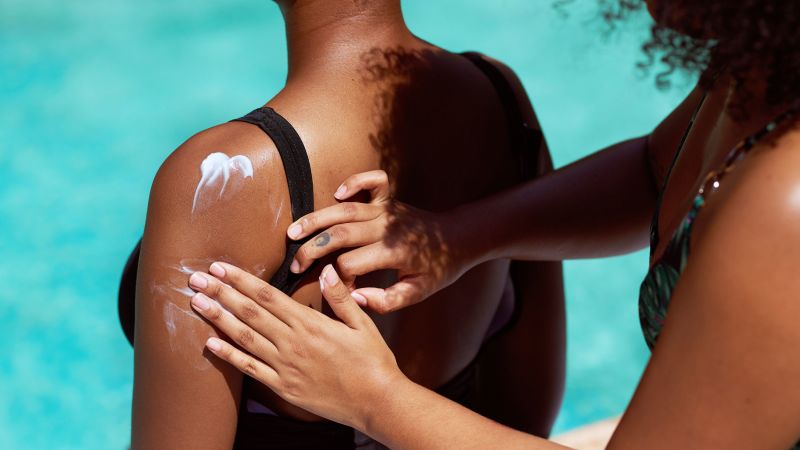Choosing The Right Sunscreen In 2025: Safety For You And Your Kids

Welcome to your ultimate source for breaking news, trending updates, and in-depth stories from around the world. Whether it's politics, technology, entertainment, sports, or lifestyle, we bring you real-time updates that keep you informed and ahead of the curve.
Our team works tirelessly to ensure you never miss a moment. From the latest developments in global events to the most talked-about topics on social media, our news platform is designed to deliver accurate and timely information, all in one place.
Stay in the know and join thousands of readers who trust us for reliable, up-to-date content. Explore our expertly curated articles and dive deeper into the stories that matter to you. Visit Best Website now and be part of the conversation. Don't miss out on the headlines that shape our world!
Table of Contents
Choosing the Right Sunscreen in 2025: Safety for You and Your Kids
Summer's here, and that means sun-kissed skin… or sunburns and potential long-term damage. Choosing the right sunscreen is crucial for protecting yourself and your family from the harmful effects of the sun's ultraviolet (UV) rays. But with so many options on the market, how do you navigate the sunscreen aisle in 2025 and make the best choice for your family's safety? This guide will help you understand the key factors to consider when selecting sun protection.
Understanding SPF and Broad Spectrum Protection
The first thing you need to understand is SPF (Sun Protection Factor) and broad-spectrum protection. SPF indicates the level of protection against UVB rays, which cause sunburn. A higher SPF number means greater protection, but it's important to remember that no sunscreen offers 100% protection. Broad-spectrum protection is crucial because it protects against both UVB and UVA rays. UVA rays penetrate deeper into the skin, contributing to premature aging and skin cancer. Look for sunscreens clearly labeled "broad-spectrum" with an SPF of 30 or higher. For children, especially, choosing a high SPF, broad-spectrum sunscreen is paramount.
Key Ingredients to Look For and Avoid
The active ingredients in sunscreen are what filter out UV rays. Common and effective ingredients include:
- Zinc Oxide: A mineral-based sunscreen that's gentle on sensitive skin and environmentally friendly. It's a great choice for babies and children.
- Titanium Dioxide: Another mineral-based option, also gentle and environmentally friendly.
- Oxybenzone and Octinoxate: These chemical filters are effective but have raised some concerns about environmental impact and potential hormone disruption. Many brands are now formulating without them, opting for safer alternatives. Check the label carefully.
Avoid sunscreens containing:
- Retinyl palmitate (Vitamin A): Studies suggest potential skin damage when exposed to sunlight.
- High levels of fragrance or parabens: These can irritate sensitive skin.
Sunscreen Types: Lotion, Spray, Stick, and More
Sunscreen comes in various forms, each with its pros and cons:
- Lotions: Easy to apply and blend, suitable for all skin types.
- Sprays: Quick and convenient, but ensure even coverage, as some areas might be missed.
- Sticks: Ideal for targeted application on the face or hard-to-reach areas.
- Balms: Often thicker and more moisturizing, great for dry skin.
The best type for you will depend on personal preference and lifestyle. For children, lotions and sticks are generally easier to apply evenly and avoid accidental inhalation.
Applying Sunscreen Properly: More Than Just Slathering It On
Proper application is just as important as choosing the right sunscreen. Remember these tips:
- Apply liberally 15-30 minutes before sun exposure.
- Reapply every two hours, or more frequently after swimming or sweating.
- Don't forget often-missed areas: ears, neck, back of the knees, and the tops of feet.
- Use a generous amount: Don't skimp! A thin layer won't provide adequate protection.
Choosing Sunscreens for Sensitive Skin and Babies
For babies under six months, it's crucial to consult a pediatrician before using sunscreen. Seeking shade and protective clothing are generally preferred methods of sun protection for this age group. For sensitive skin (both adults and children), opt for mineral-based sunscreens with zinc oxide or titanium dioxide as active ingredients, and avoid fragrances and other potential irritants.
The Bottom Line: Prioritize Sun Safety
Choosing the right sunscreen is a vital step in protecting your family's skin health. Prioritize broad-spectrum protection with an SPF of 30 or higher, and select sunscreens with gentle, environmentally friendly ingredients. Remember that consistent and proper application is key to maximizing protection. Stay informed, make smart choices, and enjoy the sun safely! For further information on sun safety, consult the .

Thank you for visiting our website, your trusted source for the latest updates and in-depth coverage on Choosing The Right Sunscreen In 2025: Safety For You And Your Kids. We're committed to keeping you informed with timely and accurate information to meet your curiosity and needs.
If you have any questions, suggestions, or feedback, we'd love to hear from you. Your insights are valuable to us and help us improve to serve you better. Feel free to reach out through our contact page.
Don't forget to bookmark our website and check back regularly for the latest headlines and trending topics. See you next time, and thank you for being part of our growing community!
Featured Posts
-
 Moodys Downgrade Unfazed S And P 500 Dow And Nasdaq Post Strong Gains
May 21, 2025
Moodys Downgrade Unfazed S And P 500 Dow And Nasdaq Post Strong Gains
May 21, 2025 -
 New Orleans Da Staff Flee As Inmate Manhunt Expands To Fourth Capture
May 21, 2025
New Orleans Da Staff Flee As Inmate Manhunt Expands To Fourth Capture
May 21, 2025 -
 Tense Moments At La Guardia Investigations Follow Airport Close Call
May 21, 2025
Tense Moments At La Guardia Investigations Follow Airport Close Call
May 21, 2025 -
 Putins Actions Highlight Trumps Reduced International Leverage
May 21, 2025
Putins Actions Highlight Trumps Reduced International Leverage
May 21, 2025 -
 Nature Conservation Drives Corporate Value 160 Japanese Companies Adopt New Strategies Across 13 Sectors
May 21, 2025
Nature Conservation Drives Corporate Value 160 Japanese Companies Adopt New Strategies Across 13 Sectors
May 21, 2025
Latest Posts
-
 Riots 2025 League Of Legends Hall Of Fame Induction A Closer Look
May 21, 2025
Riots 2025 League Of Legends Hall Of Fame Induction A Closer Look
May 21, 2025 -
 Esg 13
May 21, 2025
Esg 13
May 21, 2025 -
 Juvenile Arrests Follow Church Break In Bathroom Defecation
May 21, 2025
Juvenile Arrests Follow Church Break In Bathroom Defecation
May 21, 2025 -
 Breaking News Two Youths Accused In Church Property Damage And Defecation Case
May 21, 2025
Breaking News Two Youths Accused In Church Property Damage And Defecation Case
May 21, 2025 -
 Solo Levelings First Award A Milestone For The Popular Series
May 21, 2025
Solo Levelings First Award A Milestone For The Popular Series
May 21, 2025
